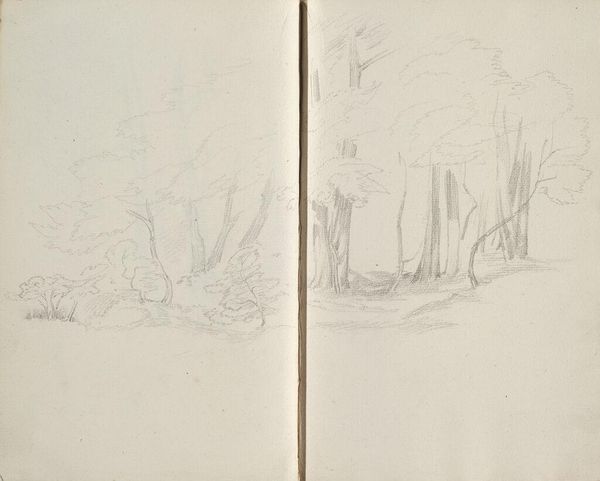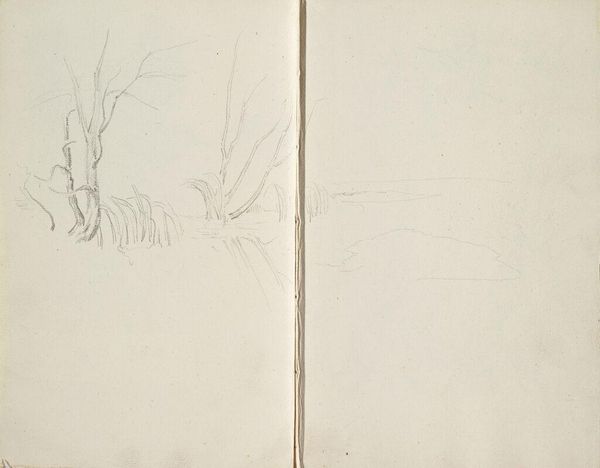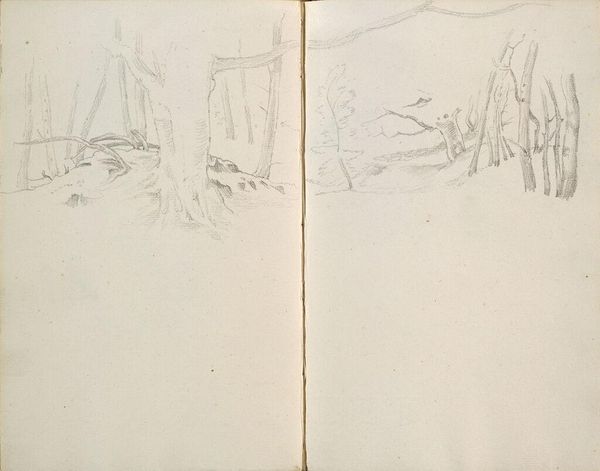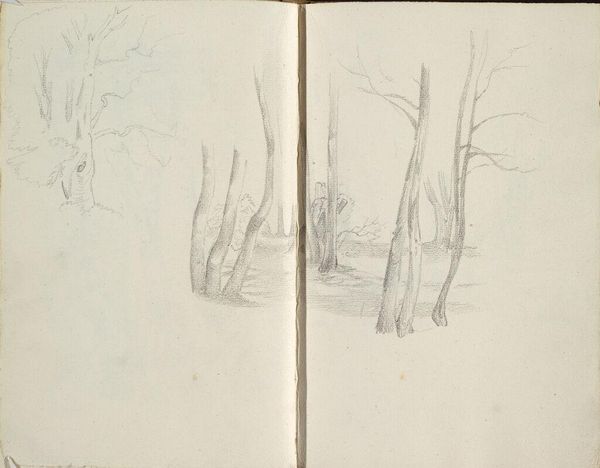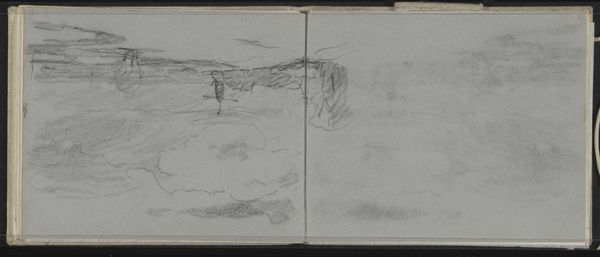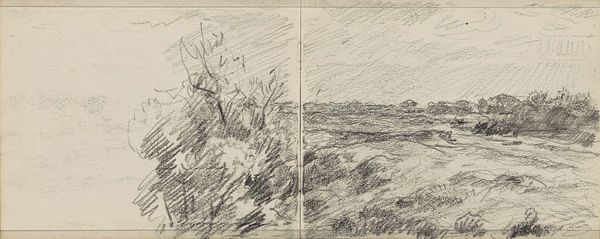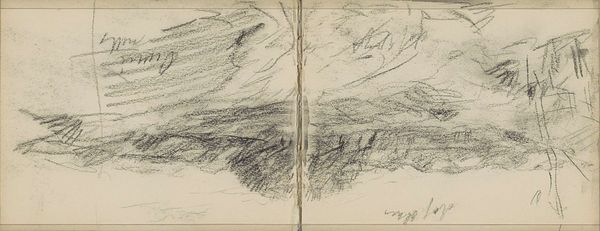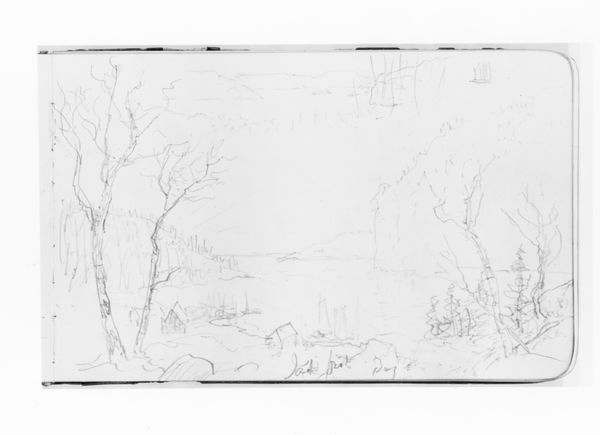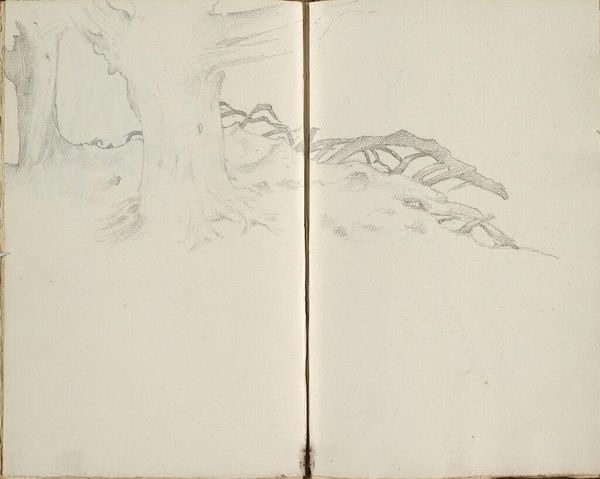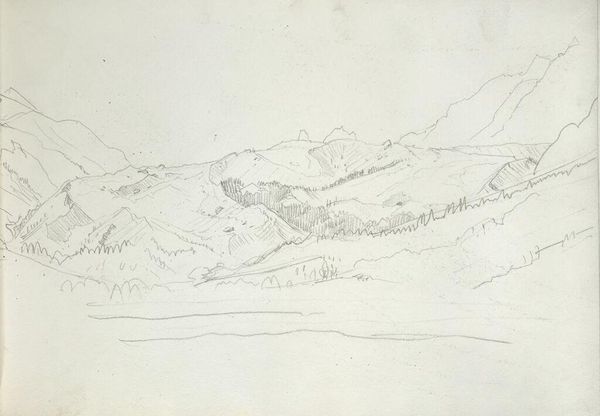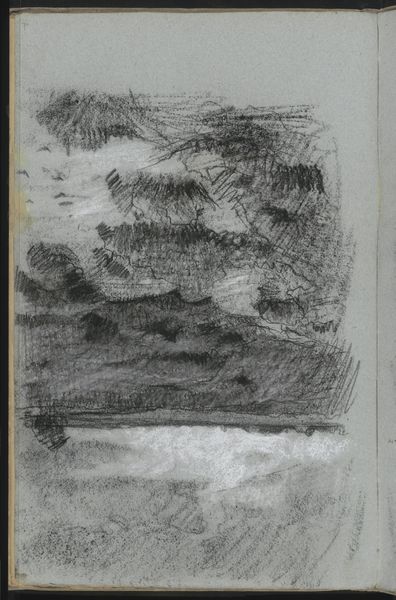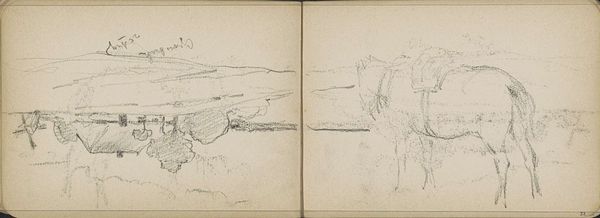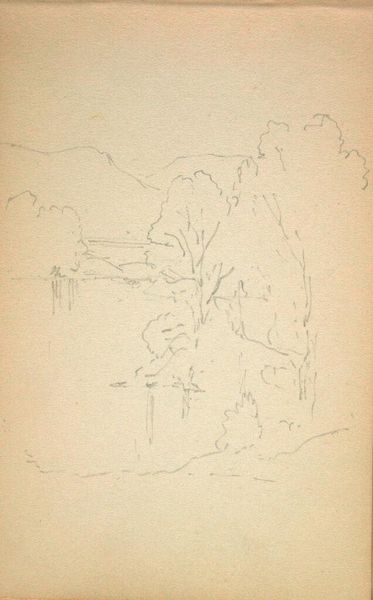
Landscape (continues on page 38 verso); verso: Trees in Landscape (continues on page 40 recto) c. 19th century
0:00
0:00
Dimensions: 24 x 15.2 cm (9 7/16 x 6 in.)
Copyright: CC0 1.0
Curator: Here we have Edward Burne-Jones’s “Landscape,” a graphite sketch spanning two pages of a sketchbook, currently held at the Harvard Art Museums. Editor: There's such a delicate, almost ephemeral quality to the graphite work. It feels like a fleeting moment captured. Curator: Absolutely. Burne-Jones, while known for his Pre-Raphaelite paintings, often used sketchbooks to quickly record observations. This allows us a more intimate look at his process. Editor: I’m struck by the materiality—the texture of the paper itself, the deliberate mark-making. It reminds us of the labor inherent in even the most seemingly spontaneous artistic gestures. How does this intimate work relate to his broader artistic output and social context? Curator: Burne-Jones situated himself within a complex Victorian landscape. His interest in medievalism and mythology offered an escape from industrial society, yet he was also influenced by socialist ideas through his friendship with William Morris. Editor: So, even in these landscapes, we might see a subtle commentary on the changing relationship between humanity and nature. Curator: Precisely. These landscapes were studies that would serve as reference material in his later paintings. They stand as evidence of his engagement with the natural world. Editor: It’s powerful to see how a personal study intertwines with broader social concerns about labor and the rapidly changing world. Curator: Indeed. This gives us a better understanding of Burne-Jones's approach to the role of art in society.
Comments
No comments
Be the first to comment and join the conversation on the ultimate creative platform.
